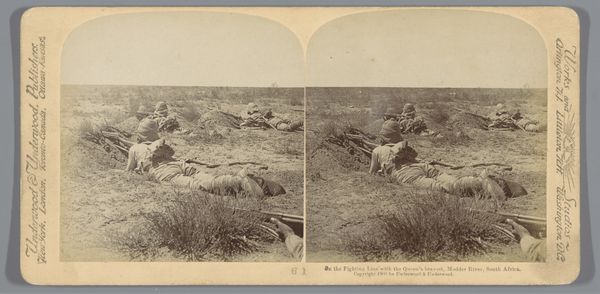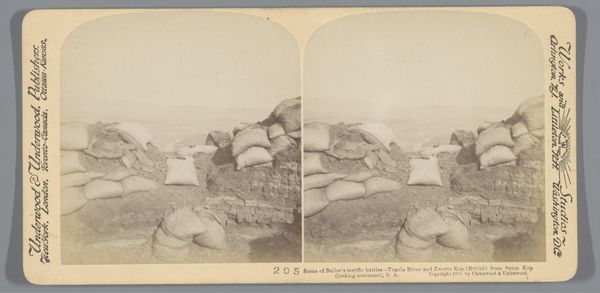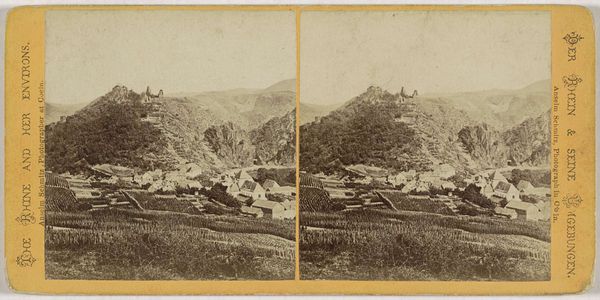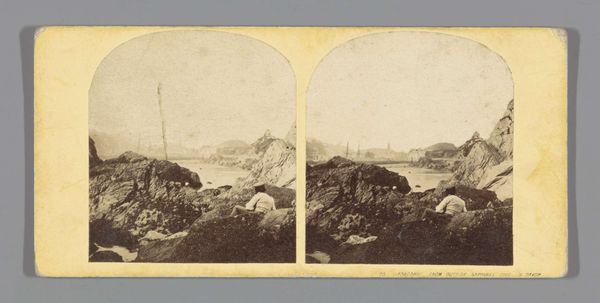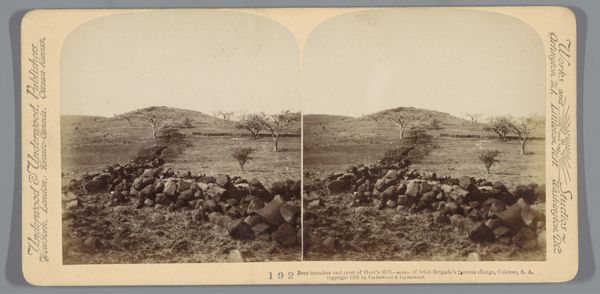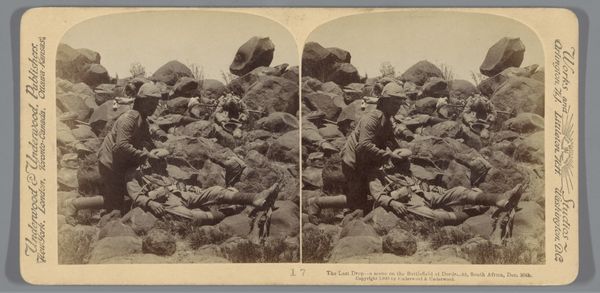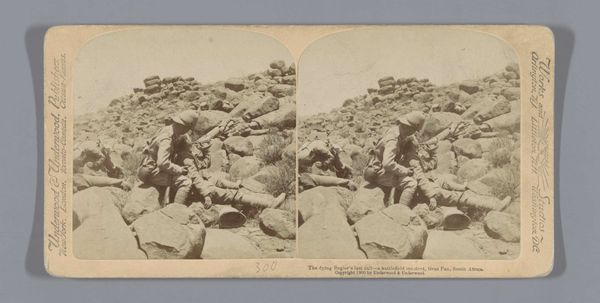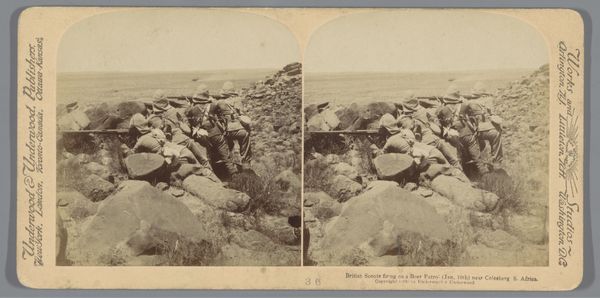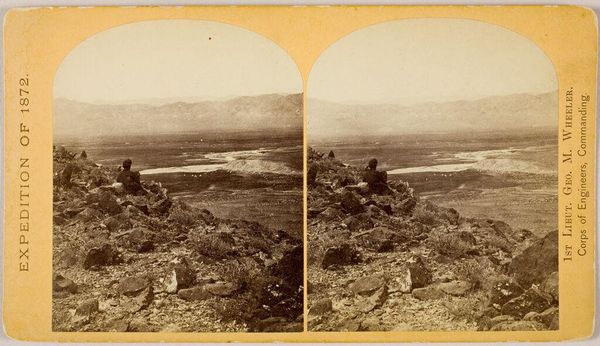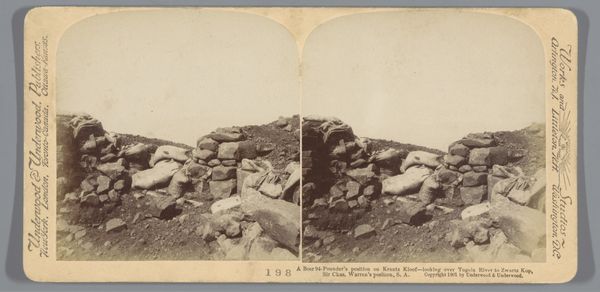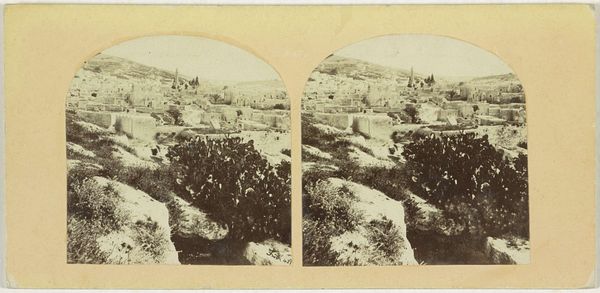
photography, gelatin-silver-print
#
landscape
#
photography
#
gelatin-silver-print
#
realism
Dimensions: height 84 mm, width 175 mm
Copyright: Rijks Museum: Open Domain
Editor: Here we have Giorgio Sommer's photograph, "Mannen op gestold lava van de Vesuvius in Napoli," created sometime between 1860 and 1880. It’s a gelatin silver print, and the starkness of the volcanic rock really strikes me. What visual echoes or symbolic meanings do you see in this image? Curator: What I see are the shadows of Pompeii and Herculaneum looming large. Look how small the figures appear against the landscape – they're almost like dark heralds. It's not just a landscape; it is a symbol of impermanence, the brevity of human existence contrasted against geological time. Doesn’t the dark solidified lava appear as an altar? Editor: An altar of sorts… So the people are representative of human vulnerability against nature’s destructive power? Curator: Precisely. Consider also the clothing; stiff collars and hats – markers of bourgeois society of the era, seemingly untouched and unaffected while standing on terrain that has literally been scorched. They symbolize humanity’s often misplaced sense of control over nature. And look at Vesuvius in the background—it's a constant reminder. What stories are embedded there, wouldn't you agree? Editor: I see what you mean. They're standing on a graveyard, really, aren’t they? Makes you think about how the symbols and imagery we create now might be interpreted centuries later. It's both a history lesson and a memento mori. Thanks for revealing these symbolic elements! Curator: Indeed! It underscores how visual language becomes a shared cultural memory and serves as a powerful means of communication across generations. A potent testament, wouldn’t you say?
Comments
No comments
Be the first to comment and join the conversation on the ultimate creative platform.
